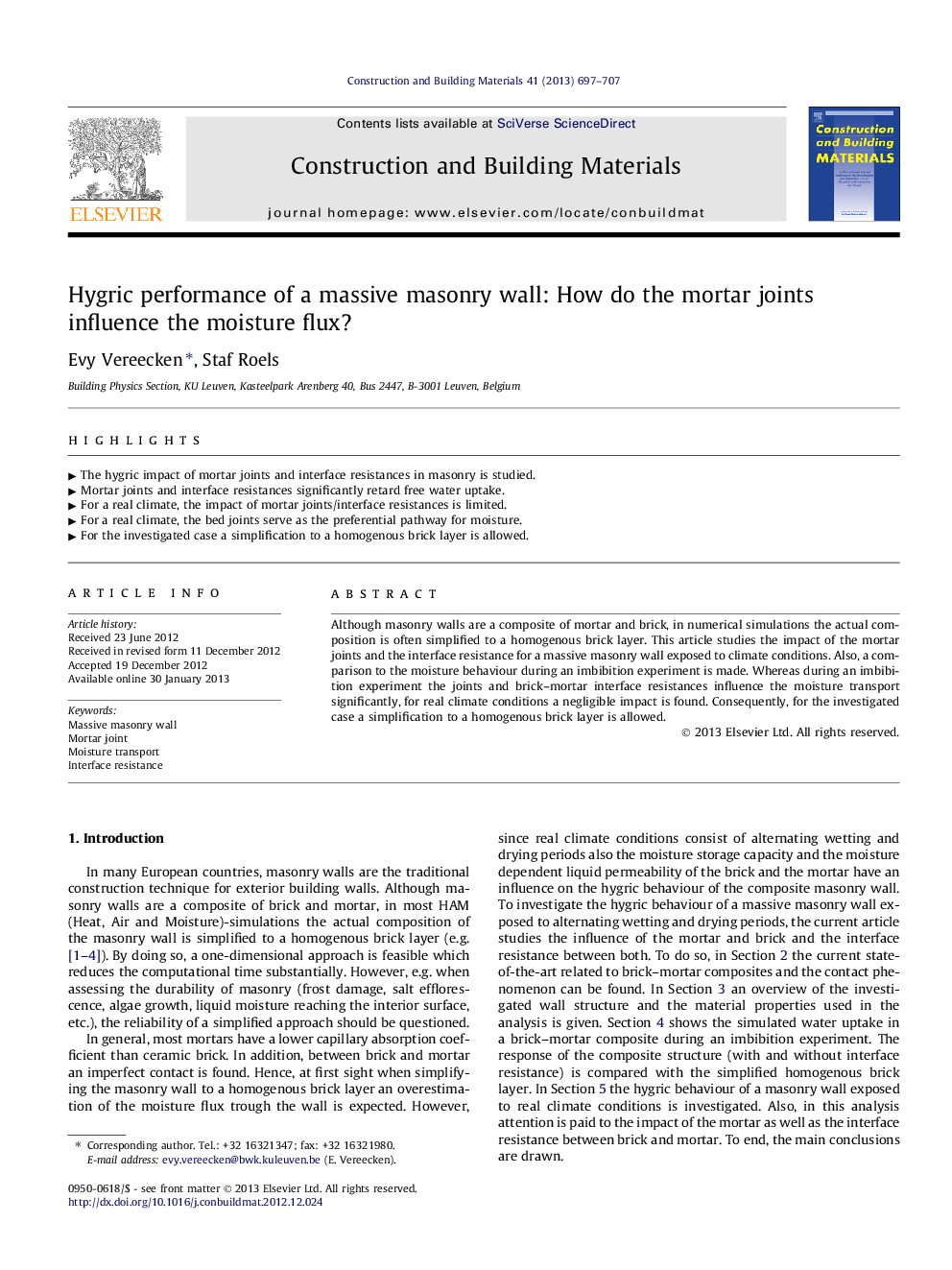| Article ID | Journal | Published Year | Pages | File Type |
|---|---|---|---|---|
| 258442 | Construction and Building Materials | 2013 | 11 Pages |
Although masonry walls are a composite of mortar and brick, in numerical simulations the actual composition is often simplified to a homogenous brick layer. This article studies the impact of the mortar joints and the interface resistance for a massive masonry wall exposed to climate conditions. Also, a comparison to the moisture behaviour during an imbibition experiment is made. Whereas during an imbibition experiment the joints and brick–mortar interface resistances influence the moisture transport significantly, for real climate conditions a negligible impact is found. Consequently, for the investigated case a simplification to a homogenous brick layer is allowed.
► The hygric impact of mortar joints and interface resistances in masonry is studied. ► Mortar joints and interface resistances significantly retard free water uptake. ► For a real climate, the impact of mortar joints/interface resistances is limited. ► For a real climate, the bed joints serve as the preferential pathway for moisture. ► For the investigated case a simplification to a homogenous brick layer is allowed.
